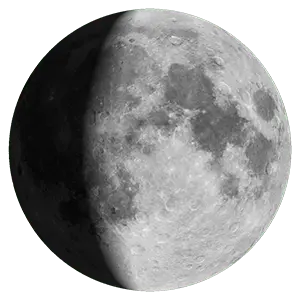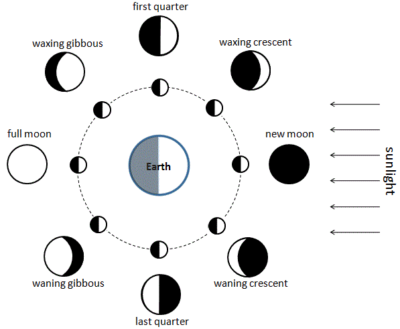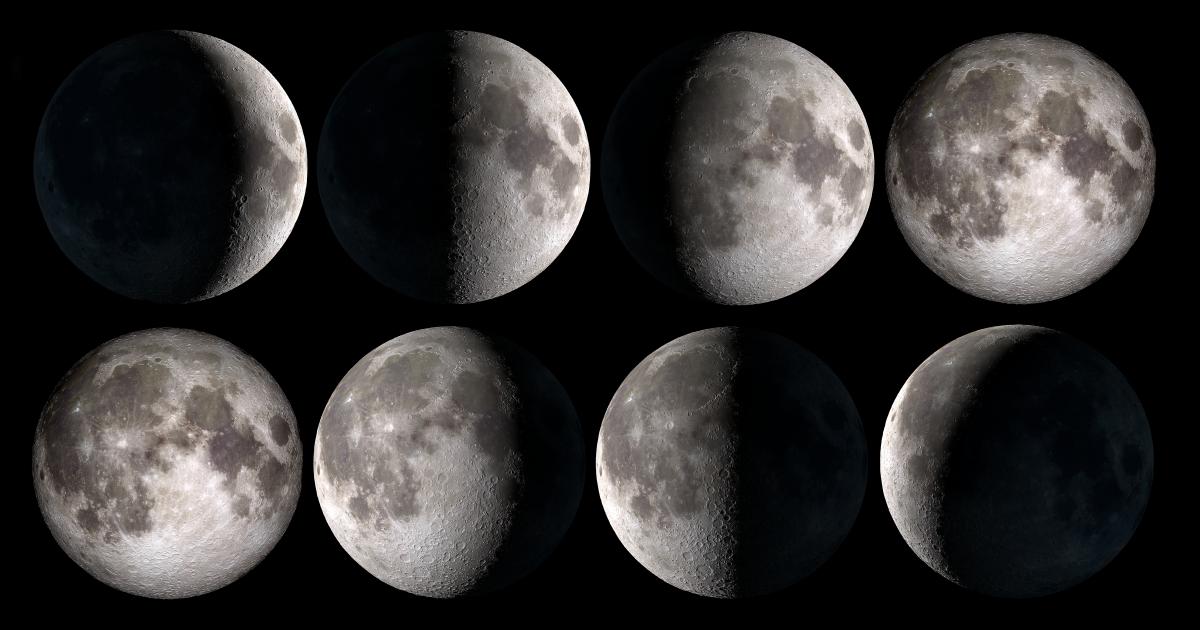So the question is, How Long Does It Take for the Entire Pattern of Moon Phases to Be Completed? Before understanding the answer to this question, we must have to understand that what the moon is.
Understanding The Moon

The moon is Earth’s only natural satellite, orbiting our planet and reflecting sunlight to create its phases. It plays an important role in regulating Earth’s tides through its gravitational pull. The moon’s surface is covered with craters, mountains, and plains, remnants of ancient volcanic activity and meteor impacts. Its consistent presence has significantly influenced human culture, timekeeping, and navigation throughout history.
The Moon has been a subject of fascination and discussion for humans for thousands of years. Its beauty and brightness present a unique sight in the night sky. One of the most captivating aspects of our celestial neighbour is its phases, which cycle through a well defined pattern every month.
If you’ve ever wondered that, “How long does it take for the entire pattern of moon phases to be completed?” You are not the only one whose mind has this question. This question delves into the heart of lunar cycles, an essential concept in both astronomy and timekeeping.
What Are Moon Phases?

Before knowing the duration of the moon phases cycle, it is important to know what are the phases of the moon. First of all, understand that the moon does not have any light of its own, rather the light that emanates from it is a reflection of the sunlight. The phases of the moon are the different ways the moon looks from Earth over about a month.
This Lunar Cycle is Divided Into Eight Parts

- New moon
- Waxing crescent
- First quarter
- Waxing gibbous
- Full moon
- Waning gibbous
- Last quarter
- Waning crescent.
Detailed Breakdown of Moon Phases
- New Moon: The cycle starts with the new moon, where the moon is positioned between the Earth and the sun. During this phase, the side of the moon facing Earth is not illuminated, making it invisible to us.
- Waxing Crescent: Following the new moon, a sliver of the moon becomes visible as a crescent. This phase lasts until the first quarter.
- First Quarter: About a week after the new moon, the moon reaches the first quarter phase, where half of the moon’s surface is illuminated.
- Waxing Gibbous: As more of the moon becomes illuminated, it enters the waxing gibbous phase, leading up to the full moon.
- Full Moon: The entire face of the moon is illuminated and fully visible from Earth. This marks the midpoint of the lunar cycle.
- Waning Gibbous: After the full moon, the light begins to wane, and the moon enters the waning gibbous phase.
- Last Quarter: About three weeks into the cycle, the moon reaches the last quarter phase, where again, half of the moon’s surface is illuminated.
- Waning Crescent: Finally, the moon enters the waning crescent phase, gradually diminishing in visibility until it becomes a new moon once again.
How Long Does It Take for the Entire Pattern of Moon Phases to Be Completed?
The complete cycle of moon phases, from new moon to new moon, is known as a lunar month or a synodic month. This cycle takes approximately 29.5 days to complete. This period is slightly longer than the moon’s orbital period around the Earth (27.3 days), due to the Earth’s simultaneous orbit around the sun.
Factors Influencing the Lunar Cycle
While the moon phases are consistent, several factors can influence the precise observation and duration:
- Orbital Dynamics: The moon’s elliptical orbit around Earth means its speed varies, affecting the exact length of each phase.
- Earth’s Orbit: As Earth orbits the sun, the angle of sunlight striking the moon changes, influencing how we see the moon’s phases.
- Lunar Libration: This refers to the apparent wobbling of the moon, which allows us to see slightly different perspectives of its surface over time.
Observing Moon Phases
Tracking the moon phases can be a rewarding experience, offering insight into the moon’s behaviour and its impact on Earth. There are several ways to observe and track the phases:
- Lunar Calendars: These calendars specifically mark the phases of the moon, providing an easy reference for the entire lunar cycle.
- Moon Phase Apps: Numerous apps are available that provide real-time data on the current phase of the moon, along with predictions for future phases.
- Astronomy Websites: Websites like NASA and timeanddate.com offer detailed information and visual guides to the moon’s phases.
Cultural and Practical Significance of Moon Phases
Understanding the lunar cycle is not just an academic exercise; it has significant cultural, agricultural, and navigational importance.
- Cultural Significance: Many cultures and religions have festivals and rituals centred around specific moon phases. For instance, the Islamic calendar is a lunar calendar based on the moon phases.
- Agricultural Planning: Farmers have historically used the lunar cycle to guide planting and harvesting activities, a practice known as bio-dynamic farming.
- Navigation and Timekeeping: Before the advent of modern technology, sailors and explorers used the moon for navigation. The phases of the moon were also crucial in the development of early calendars.

Conclusion
So, how long does it take for the entire pattern of moon phases to be completed? The answer is approximately 29.5 days. This duration, known as the synodic or lunar month, is a fascinating dance between the Earth, moon, and sun, creating a predictable yet ever-changing spectacle in our skies.
Understanding this cycle not only enhances our appreciation of the moon’s beauty but also connects us to ancient practices and modern applications.
For more detailed information about the moon and its phases, you can visit NASA’s official moon page here.
By integrating this knowledge into our lives, we continue a long tradition of human curiosity and connection with the cosmos. Whether for cultural, practical, or personal reasons, the lunar cycle remains a fundamental part of our experience on Earth.
Also Read This – Which Layer is Responsible for Earth’s Magnetic Field and Why?
Hope you enjoyed this useful and helpful content based on “How Long Does It Take for the Entire Pattern of Moon Phases to Be Completed?”. For more information like this stay connect with us on latestbite.com Thanks for your precious time.



